DADS HAVE train sets and moms have dollhouses? Is that how it works? Maybe, maybe not. But, frankly, it’s a distinction without a difference: Both “environments” can be executed at extreme levels of craftsmanship, sometimes whimsy and often passion.
Ah, but train sets are muscular and have moving objects! Well, some of the more serious dollhouses in the world have working elevators and lamps that light up and in at least one case a full complement of plumbing, including hot and cold running water.
If you’re like me, you’ll find it easy to fall under the spell of the cleaned-up, miniaturized worlds they present to us. If I land on the dollhouse side of the fence it’s more because I don’t care that much about transportation but despair of ever finishing decorating my own home.
For hundreds of years talent artisans and craftspeople have applied their skills to re-creating famous interiors or even fantasizing them out of thin air and aspiration. And, as we see with several of these collections, individuals without the necessary skills to create such treasures have plowed ahead anyway, commissioning artists to create their fantasy for them.
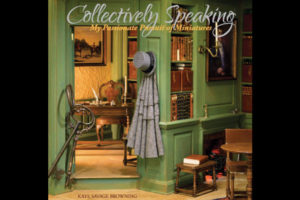 Kathleen Savage Browning is a collector and founder of the KSB Miniatures Collection in Maysville, Kentucky. She has traveled the world to collect “rooms” and to engage with miniature artists to add to the interiors she already has—and in so doing helps keep alive the tradition of the miniaturist. In addition to maintaining the collection at the Kentucky Gateway Museum Center in Maysville, she has also written two volumes showing her treasures. In Collectively Speaking: My Passionate Pursuit of Miniatures, Kaye Browning recounts her 40 years of collecting, and allows the rest of us to enjoy the hunt vicariously.
Kathleen Savage Browning is a collector and founder of the KSB Miniatures Collection in Maysville, Kentucky. She has traveled the world to collect “rooms” and to engage with miniature artists to add to the interiors she already has—and in so doing helps keep alive the tradition of the miniaturist. In addition to maintaining the collection at the Kentucky Gateway Museum Center in Maysville, she has also written two volumes showing her treasures. In Collectively Speaking: My Passionate Pursuit of Miniatures, Kaye Browning recounts her 40 years of collecting, and allows the rest of us to enjoy the hunt vicariously.
One supremely worthy example of a fantasy interior is the Astolat Dollhouse Castle. Occasionally it is put on display, usually to raise money for charity. In addition to the Wikipedia images shown below, it can be seen in a slideshow from 2006. Truth to tell, you’ll probably get closer to the finely detailed “castle” in these images than you might at a crowded exhibit.
Another dollhouse worthy of a video is Queen Mary’s Dolls’ House, which has been displayed at Windsor Castle for the past 90 years or so. Viewing the images on the Royal Collection Trust website is certainly easier than taking a trip to England (if and when they’ll have us again).
Some people organize their travels around famous gardens, others around art collections. I think one could do worse than hop around from miniature museum to collectors’ show to special exhibit (like the Yuletide at Winterthur one, with its mini-Mansion). But beware: Like any pursuit, collecting dollhouses, or miniatures, or visits to either, can be as deep a rabbit hole as antique rugs and as obsessive as baseball statistics. And, to judge by the $8.5 million appraisal of the Astolat Dollhouse Castle, it can be even more expensive.
—Nancy McKeon
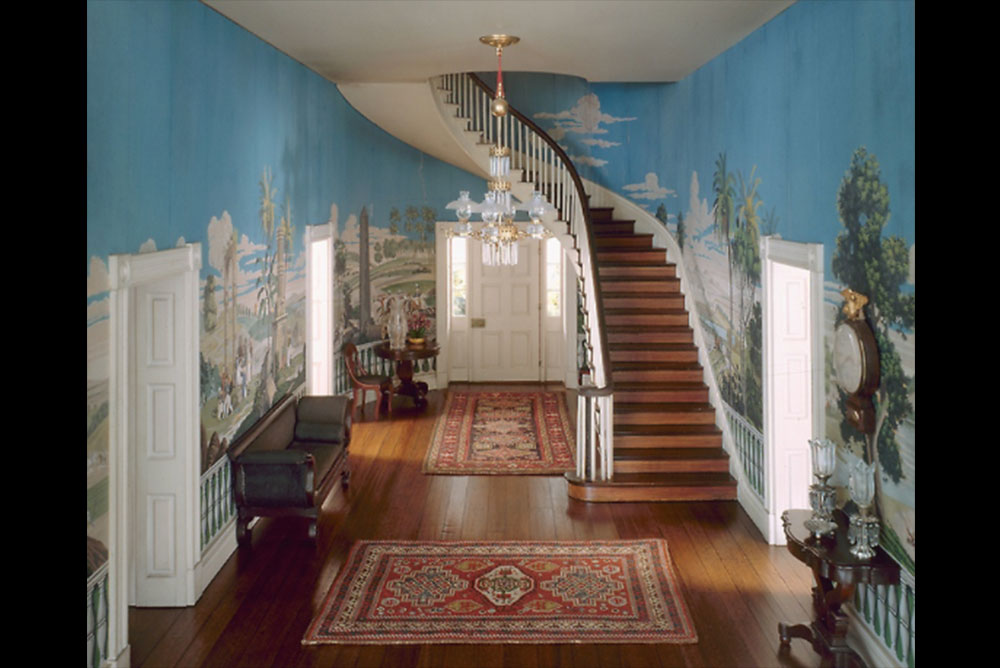
This re-creation of a Tennessee Entrance Hall circa 1835 is one of the miniature rooms commissioned by Mrs. James Ward Thorne starting in about 1932. This room was built in 1940 at a 1/12 scale (1 inch to 1 foot) like all 69 of her rooms, part of the collection of the Art Institute of Chicago. / Photo from the Art Institute of Chicago.
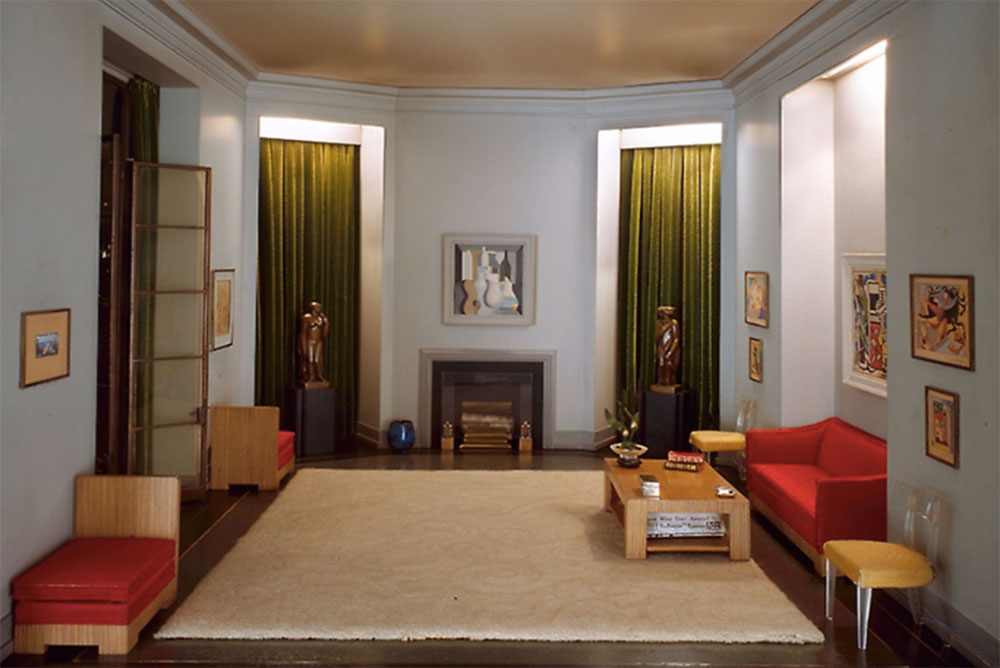
In a more modern vein among the Thorne miniature rooms is this California Hallway, circa 1940 and executed in that year. Mrs. Thorne’s collection, built by master craftsmen at her direction, features American furnishings from the 17th century to the middle of the 20th century. Depictions of European interiors in the collection, at the Art Institute of Chicago, range from the late 13th century to the 1930s. / Photo from the Art Institute of Chicago.
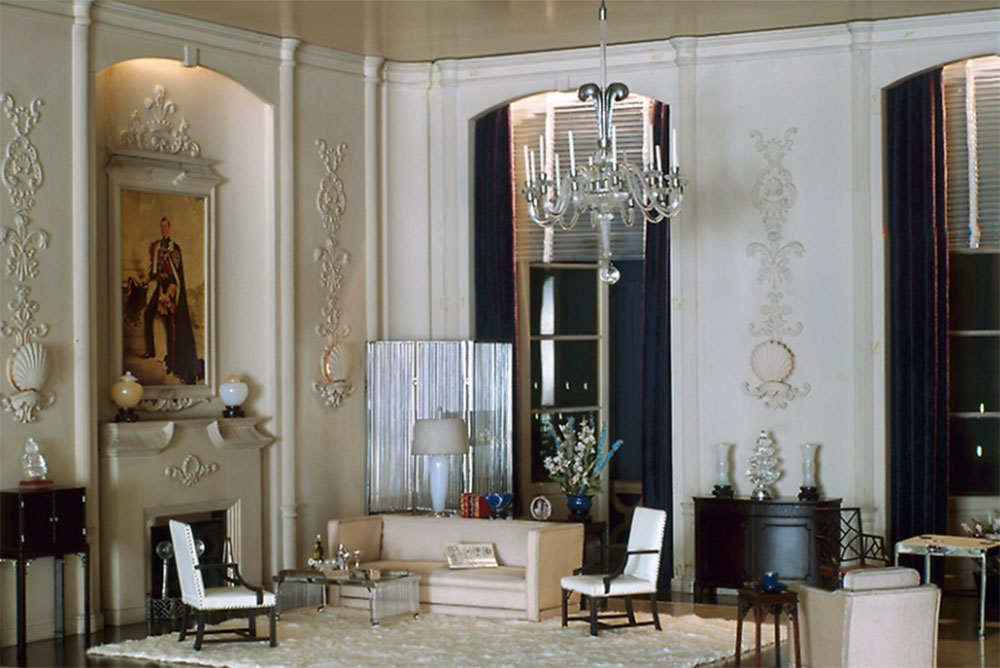
The English Drawing Room of the Modern Period dates from around 1937. It’s one of the Thorne Miniature Rooms at the Art Institute of Chicago. / Photo from the Art Institute of Chicago.
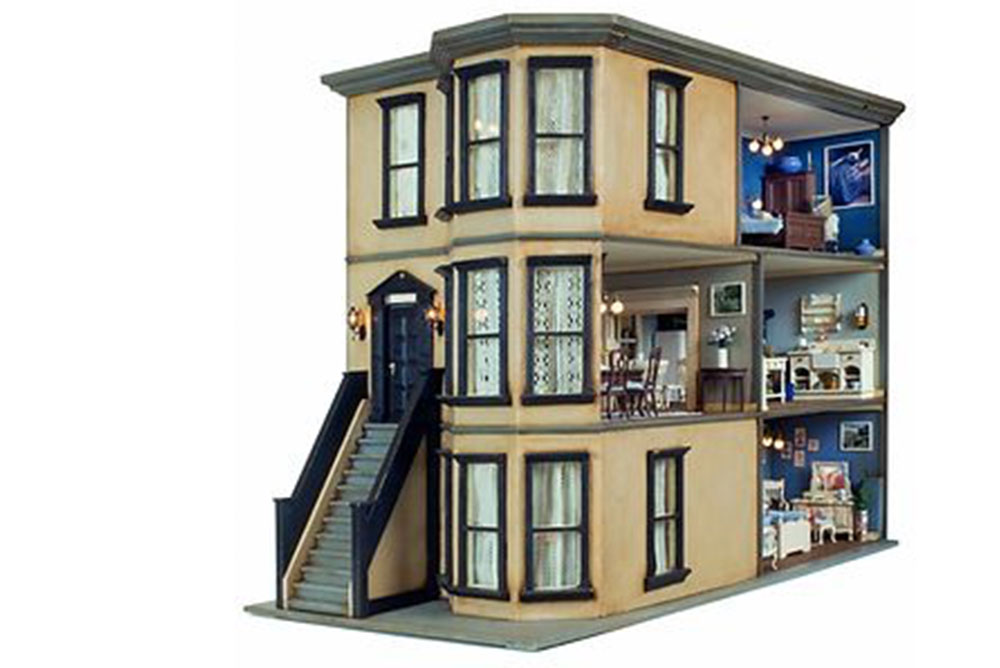
The townhouse here is from the website of the Warsaw (Poland) Doll Museum, which dates the tradition of genre scenes, with their fealty to “typical” doll figures and furnishings, to the Christmas creches of the 13th century. The rich tradition of the Nativity creche—which of course has expanded to include entire town settings—reached an artistic peak in 18th-century Naples and continues to contemporary times. / Photo from muzeumdomkow.pl.

Although most dollhouse furnishings are made with care, they don’t necessarily depict the environments of the highest social orders. Some faithfully represent middle-class reality (and perhaps aspiration), as in this kitchen scene from the Warsaw (Poland) Dollhouse Museum. / muzeumdomkow.pl.

The Great American Dollhouse Museum in Kentucky attracts visitors from all over, who are entertained by nostalgic depictions of farm life (Alma’s Farm, top) and collections of individual pieces, like this tableau of miniature 19th-century German and French furniture (bottom). / Photos from thedollhousemuseum.com.
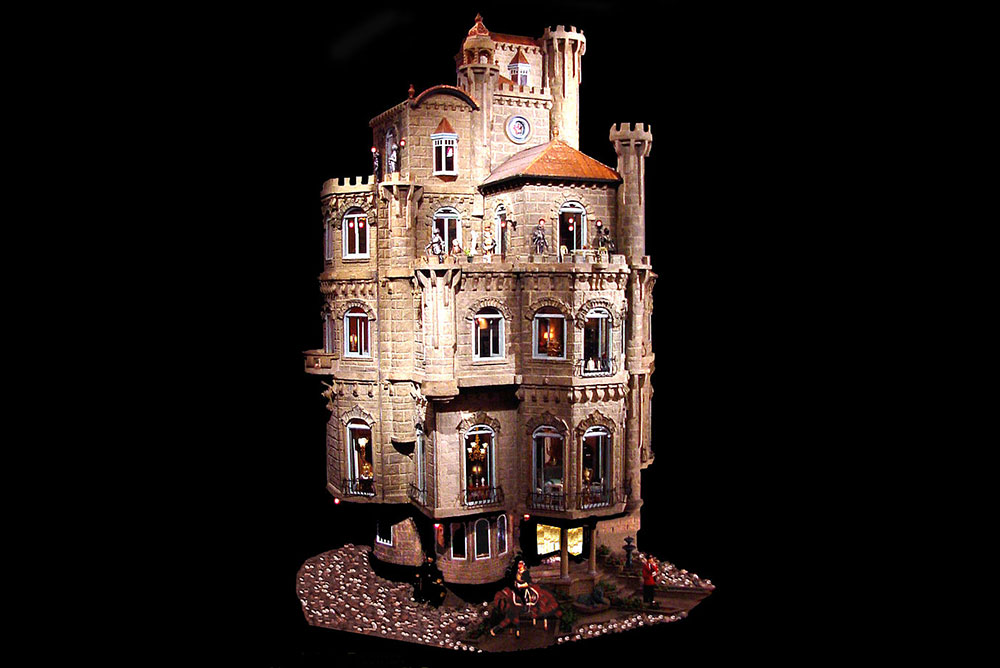
One of the most cunning confections of its type is the 9-foot-tall Astolat Castle, designed by Colorado miniaturist Elaine Diehl (who worked on it for 13 years—and that was just for the structure, before she began making the furnishings). It’s named for the castle-abode of Tennyson’s “Lady of the Lake,” who died of her unrequited love for Sir Lancelot. / Photo from Wikipedia.org.
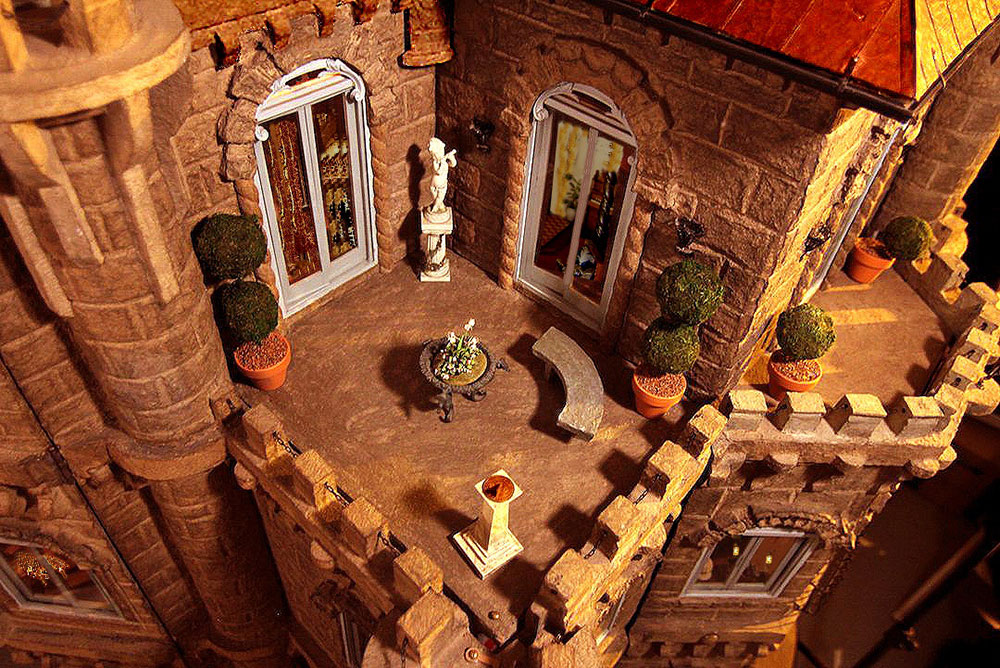
This image of the West Balcony of Astolat Castle gives some idea of the attention to detail. / Photo from Wikipedia.org.
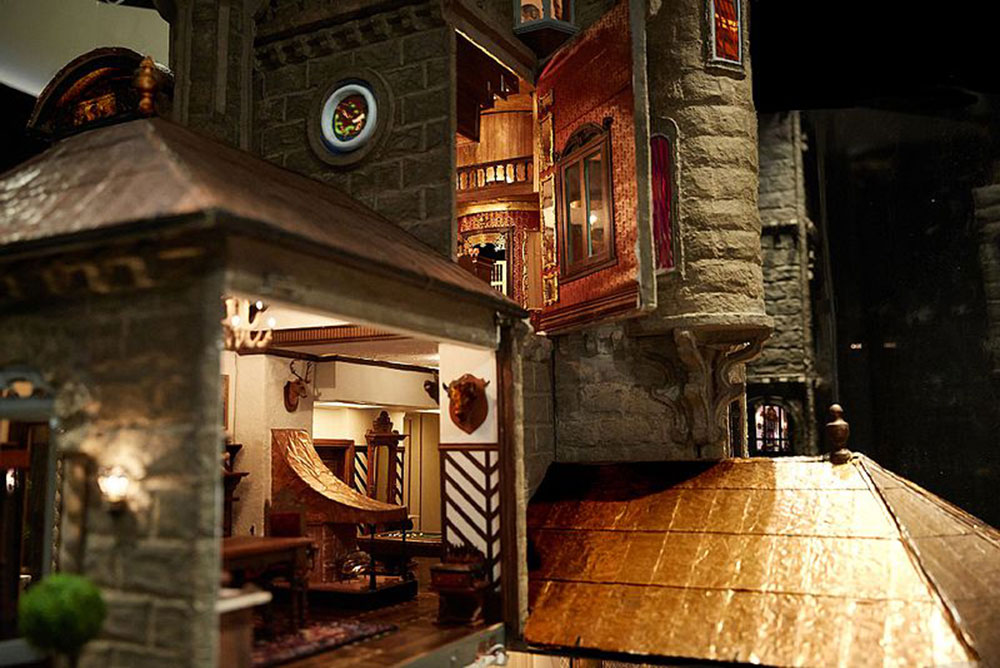
Astolat Castle is topped by the Wizard’s Tower. The work has been valued at $8.5 million. / Photo from Wikipedia.org.
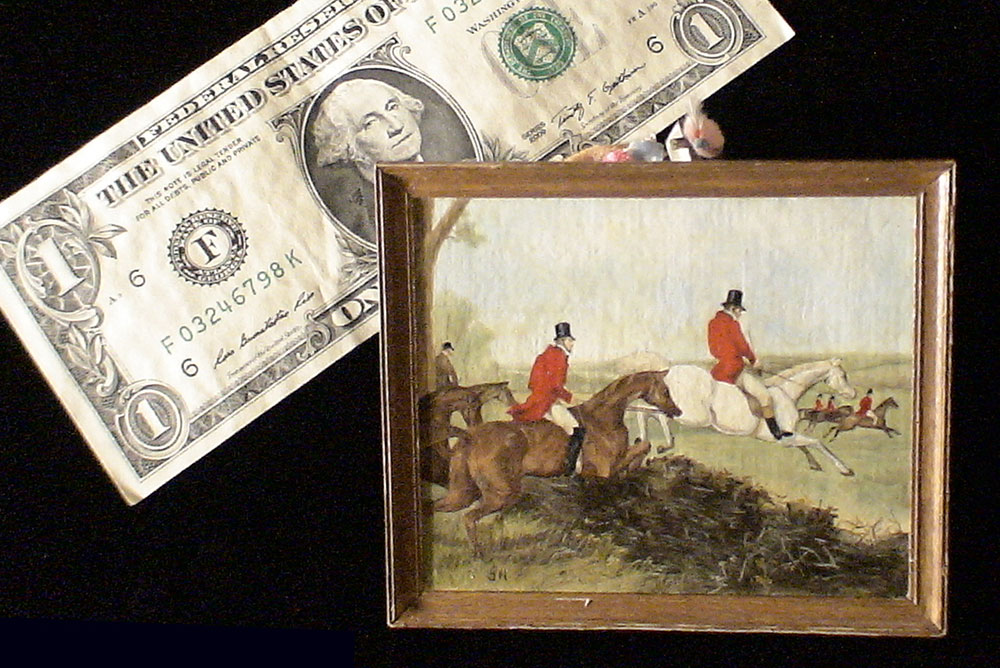
A dollar bill shown next to a real oil painting executed at 1/12 scale illustrates the level of detail in the furnishings of Astolat Castle. / Photo from Wikipedia.org.
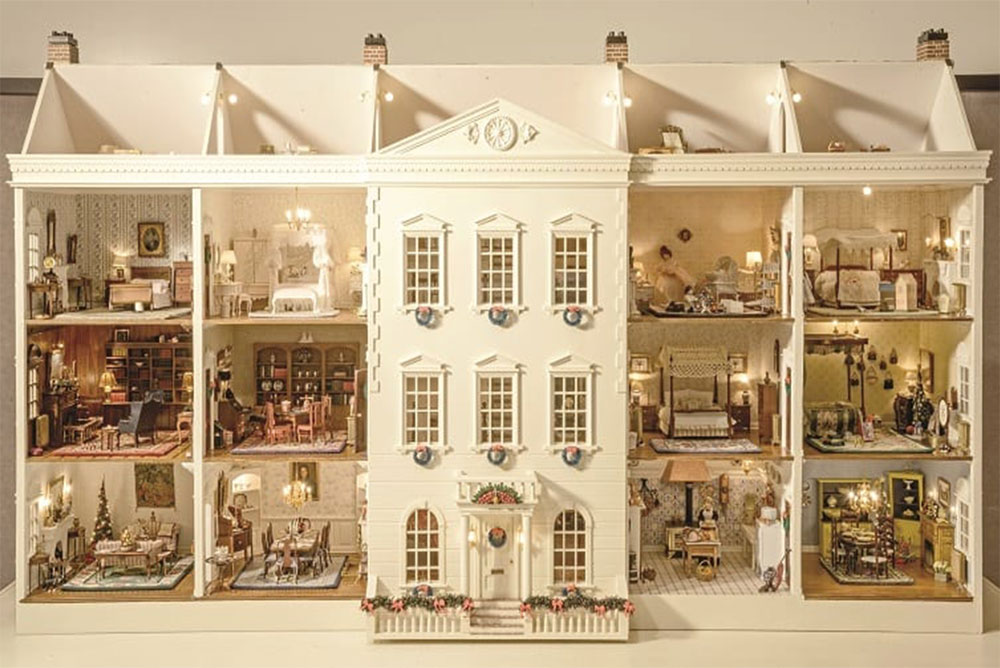
Created and decorated by interior designer and collector Nancy B. McDaniel, the Dollhouse at Winterthur estate in Delaware was given to Winterthur in 2016. The museum displays the 18-room mansion as part of its holiday exhibit each year. McDaniel was inspired to create the dollhouse after many visits to Winterthur and, perhaps more important, a visit to view Queen Mary’s dolls’ house at Windsor Castle in England (see below). / Photo from Winterthur.org.
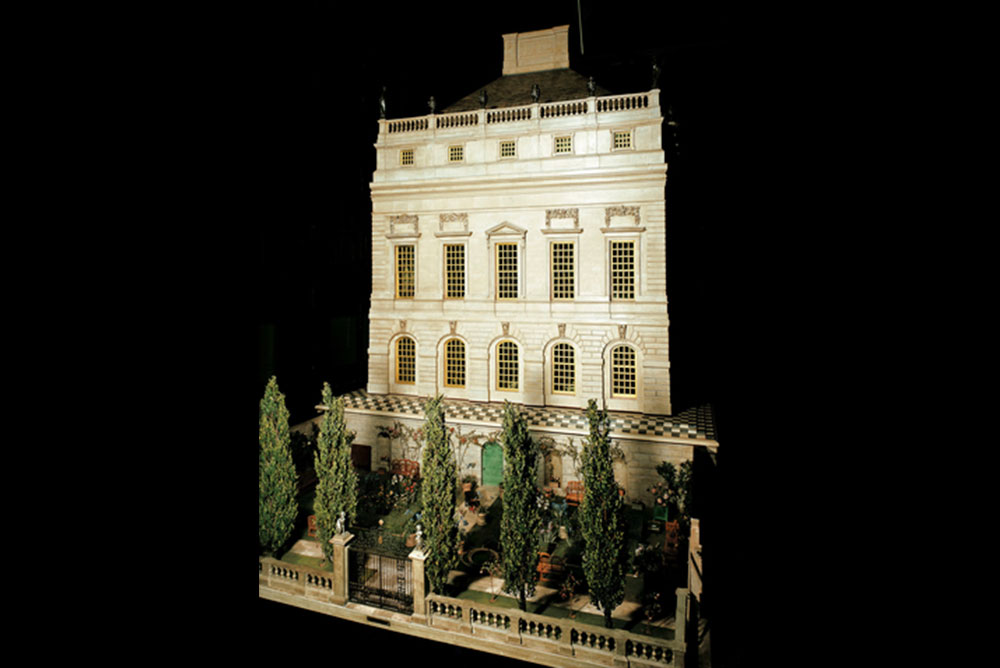
None other than the architect Sir Edwin Lutyens designed this doll house for Queen Mary of England in 1921. It sprang from an idea by the queen’s childhood friend Princess Marie Louise, and was constructed by craftsmen and specialists from all around Britain. The gardens were designed by the fabled Gertrude Jekyll. / Photo from Royal Collection Trust / © 2019 Her Majesty Queen Elizabeth II. Photo by David Cripps.
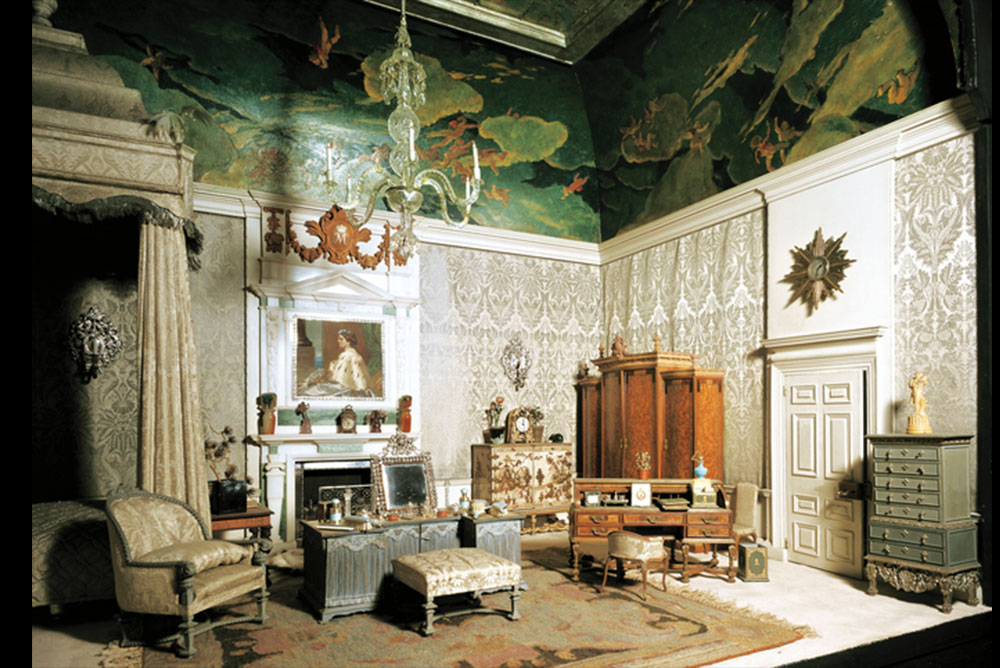
The level of detail in Queen Mary’s dolls’ house is astonishing, including real soap and food items, a working bicycle and furniture whose joints are dovetailed and whose seats are correctly upholstered. Many of the best dollhouses have electricity and working elevators; this one also has hot and cold running water. Shown is the Queen’s Bedroom. / Photo from Royal Collection Trust / © 2019 Her Majesty Queen Elizabeth II. Photo by G. Newbury.
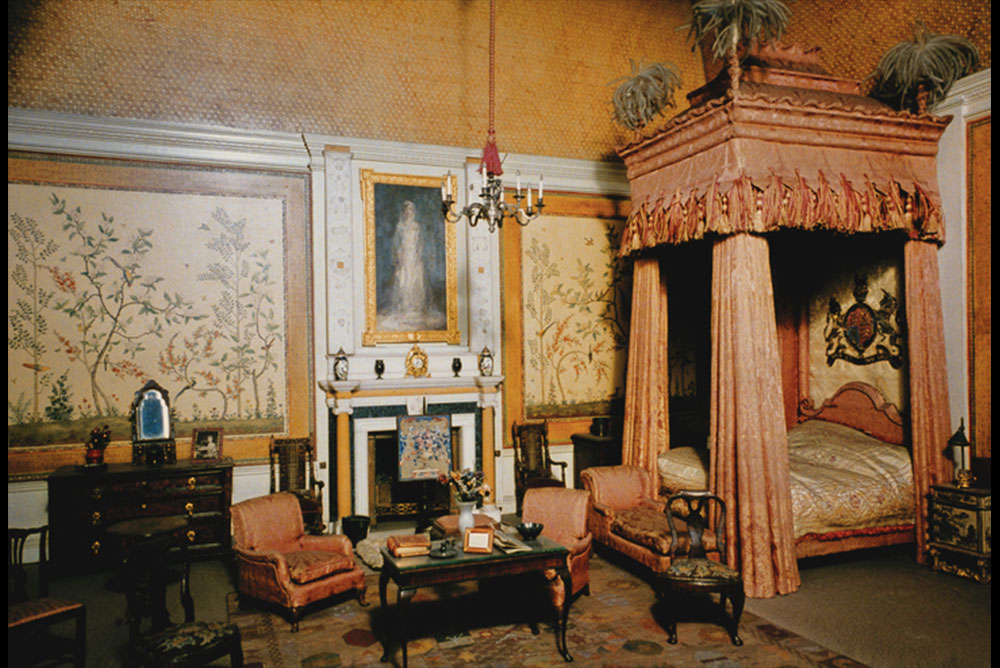
What would a royal dollhouse be without a King’s Bedroom, complete with Chinoiserie panels on the wall, a horsehair mattress and properly upholstered furniture? Queen Mary’s dolls’ house contains more than 700 miniature watercolors, prints and etchings, plus 588 miniature books. / Photo from Royal Collection Trust / © 2019 Her Majesty Queen Elizabeth II. Photo by David Cripps.
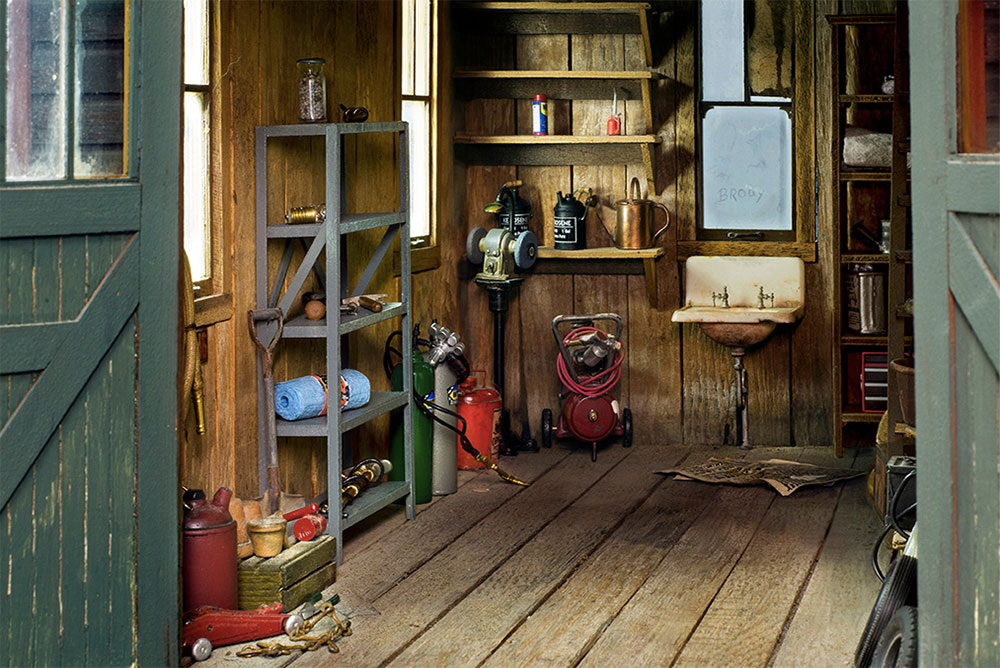
Maysville, Kentucky, is home to the Kathleen Savage Browning Miniatures Collection. Shown above is the collection’s Miniature of the Month for September 2020, the Garage of Megler Landing, a Victorian-design dollhouse commissioned in 1981. The freestanding garage will look familiar to those who own a Victorian-era house: the rough floorboards, the wood shelves, the grimy work sink, even the jumper cables. / Photo from KSBMiniaturesCollection.com.
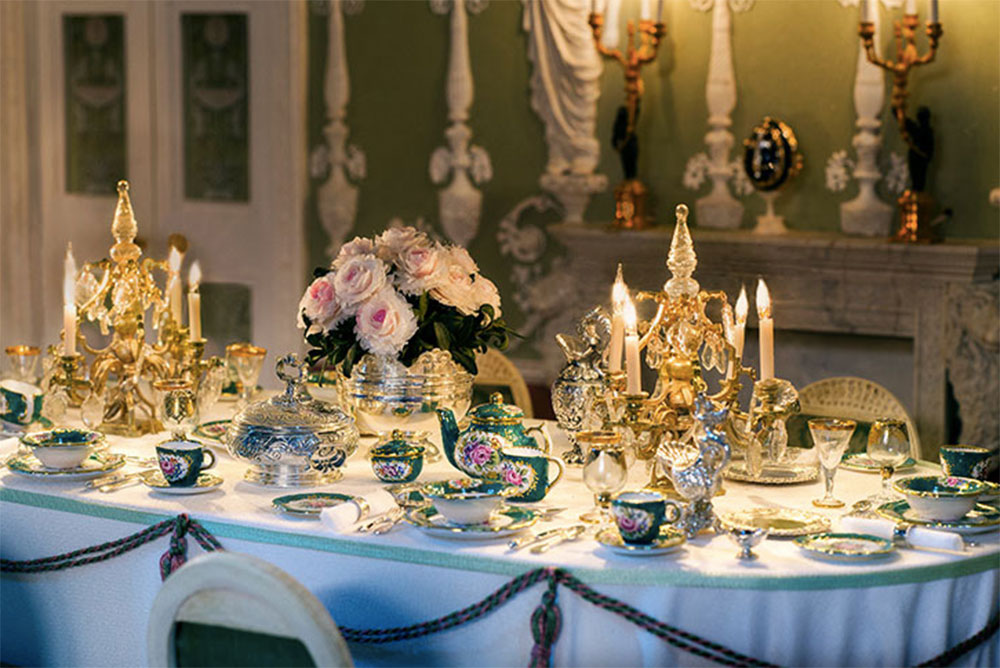
A detail of the Green Room at Catherine Palace in St. Petersburg, Russia, re-created in 1/12 scale by English miniaturist Robert Dawson. It’s part of the KSB Miniatures Collection, although not currently on display. / Photo from KSBMiniaturesCollection.com.
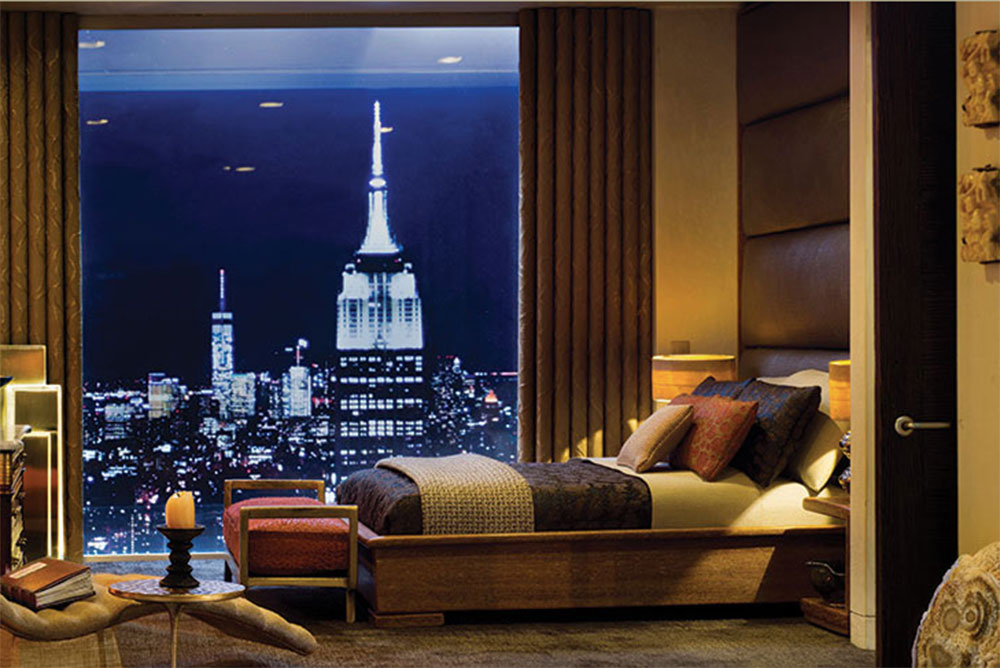
Just as detailed is this sleek New York Penthouse designed by Paris Renfroe Design and contained in the KSB Miniatures Collection in Kentucky. / Photo from KSBMiniaturesCollection.com.
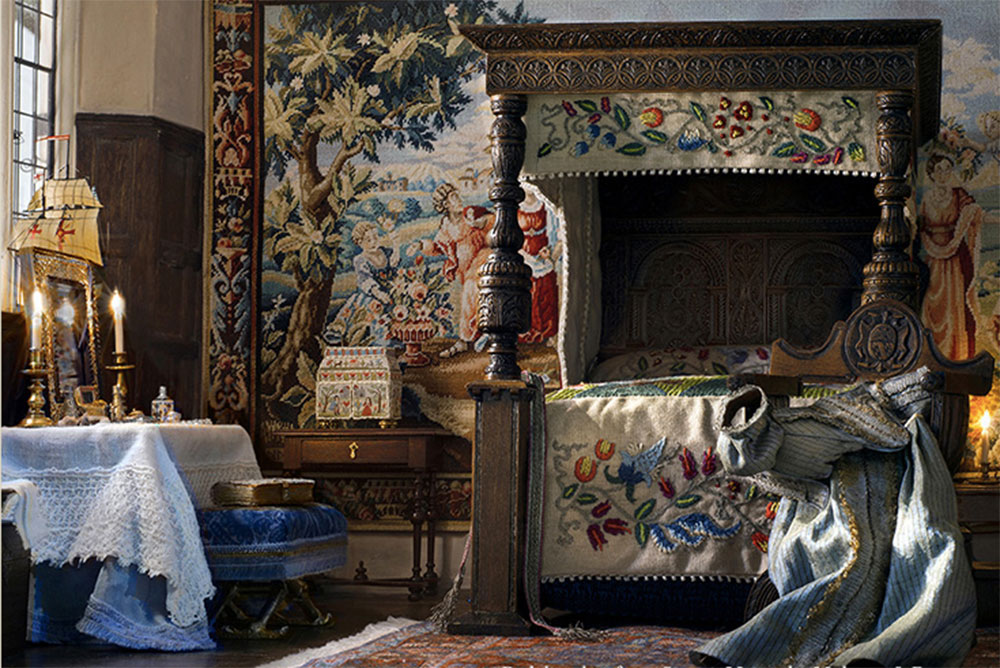
Bedchamber from Savage Manor by Mulvany & Rogers. / Photo from KSBMiniaturesCollection.com.
Astolat Dollhouse Castle, on occasional display, usually for charity.
The Great American Dollhouse Museum (closed for summer 2020), 344 Swope Drive, Danville, Kentucky 40422; telephone 859.236.1883; thedollhousemuseum.com.
KSB Miniatures Collection at the Kentucky Gateway Museum Center, 215 Sutton Street, Maysville, Kentucky 41056; telephone 606-564-5865; www.kygmc.org.
Museum Domkow dla Lalek, Plac Defilad 1, 00-901 Warsaw, Poland; telephone 517-49-00-47; www.museumdomkow.pl.
Queen Mary’s Dolls’ House, Windsor Castle, Windsor SL4 1NJ, Berkshire, England; rct.uk.
Thorne Miniature Rooms, Art Institute of Chicago, Michigan Avenue entrance, 111 South Michigan Avenue, Chicago, Illinois 60603; telephone 312-443-3600; artic.edu.
Winterthur (dollhouse on display only at Christmastime), 5105 Kennett Pike (Route 52), Winterthur, Delaware 19735; telephone 800-448-3883 or 302-888-4600; winterthur.org.

Lovely!